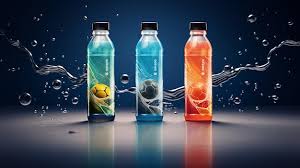During intense physical activity, the body loses water and electrolytes through sweat, while carbohydrates are oxidized by the working muscles. Consuming a combination of water, sugar, and salt during exercise helps prevent the adverse effects of dehydration (hypohydration) and provides essential glucose to the muscles, brain, and other tissues, supporting overall carbohydrate oxidation. Extensive peer-reviewed research supports the advantages of consuming carbohydrate-electrolyte solutions during exercise, and beverage manufacturers use this research to develop and validate the benefits of their products.
Regulatory Updates for Sports Hydration Drinks
Interesting News, August 12, 2024.

Sports Hydration Drink: Guidelines for Carbohydrate-Electrolyte Solutions

Start your beverage
brand today

To review your food with Professional
staying one Step ahead
During intense physical activity, the body loses water and electrolytes through sweat, while carbohydrates are oxidized by the working muscles. Consuming a combination of water, sugar, and salt during exercise helps prevent the adverse effects of dehydration (hypohydration) and provides essential glucose to the muscles, brain, and other tissues, supporting overall carbohydrate oxidation. Extensive peer-reviewed research supports the advantages of consuming carbohydrate-electrolyte solutions during exercise, and beverage manufacturers use this research to develop and validate the benefits of their products.
EFSA Guidelines for Carbohydrate-Electrolyte Solutions
The EFSA has set forth specific criteria for carbohydrate-electrolyte solutions, particularly regarding their carbohydrate concentration, osmolarity, and electrolyte content, to qualify them as beneficial for both physical performance and recovery from the physiological stress of exercise. Here are the key points:
- Osmolarity:
EFSA suggests that the osmolarity of sports drinks should generally be close to that of the body’s own fluids (isotonic), which range from 280 to 295 mOsmol/kg. Solutions can be slightly hypo- (less concentrated than blood) or hypertonic (more concentrated), depending on the intended use (quick hydration vs. energy supply). - Sodium Content: Sodium is crucial not just for osmotic balance but also for stimulating thirst and replacing salts lost through sweat. EFSA recommends a sodium concentration range typically around 460-1150 mg/L for sports drinks to enhance hydration and stimulate carbohydrate uptake.
The following Table shows the effects and applications of replacement drinks as established by EFSA’s scientific opinion.
| Types of Beverage Replenishment | Conditions of Use | Ergogenic Effects | |
| EFSA Regulation (EC) No 432/2012 [33]. | Carbohydrate electrolyte solutions | a. Between 80 and 350 kcal/L of carbohydrate. b. At least 75% of energy must be derived from carbohydrates. c. Sodium between 20 mmol/L (460 mg/L) and 50 mmol/L (1150 mg/L). d. Osmolarity between 200 and 330 mOsm/kg water. | Maintain the level of endurance in exercises that require prolonged endurance. Improve water absorption during physical exercise. |
| EFSA Regulation (EC) No 686/2021 [34]. | Carbohydrate solutions | e.Between 30 and 90 g carbohydrate/hour, where the carbohydrate in question is glucose, sucrose, fructose, or maltodextrin, under these conditions: – Fructose (from fructose or sucrose) should not account for more than one third of the total carbohydrate, and – Glucose (from glucose, sucrose or maltodextrin) should not exceed 60 g/h. f. The consumer should be informed that only trained adults performing high-intensity (at least 65% of VO2max) and long-duration (at least 60 min) physical exercise and of long duration (at least 60 min) will obtain the beneficial effect. | Improved physical performance during high intensity and long duration physical exercise in trained adults. |
The characteristics of sports drinks consumed during exercise, including their sugar content, sodium levels, and specific formulations tailored for different phases of physical activity, are summarized in the following table.
| Characteristic | Minimum | Maximum |
| Sugars (%) | 6% | 9% |
| Type of Sugars | Mix of rapid absorption sugars (glucose or maltodextrin) and sugars with slow absorption rate (fructose) in a 3:1 ratio. | [Fructose] > 33% |
| Minerals (g/L) Na | 0.46 g/L | 1.20 g/L |
| Osmolarity (mOsm/L) | 200 | 330 |
| Volume (mL/hour of exercise) | 500 mL | 1000 mL |
| Temperature (°C) | 10°C | 15°C |
| Frequency (min in the exercise) | 15 min | 30 min |
Particular Characteristics:
- In extreme temperatures (above 30°C), it is recommended to add ice cubes to the drink.
- The drink should be palatable.
- For high hydration needs, it is advisable to reduce sugar concentration to 4-6% and increase salt content (0.7 to 1 g/L) to prevent hyponatremia.
The characteristics of sports drinks tailored for different phases of training—before, during, and after exercise—are outlined in the following table. This includes variations in sugar content, sodium levels, and drink types, designed to optimize hydration and performance at each stage of physical activity.
| Timing | Drink Type | Sugar Content | Sodium (Na⁺) Content |
| Before | Isotonic or slightly hypotonic | 4-6% sugars | 0.5-0.7 g Na⁺/L |
| During | Isotonic | 6-9% sugars | 0.5-0.7 g Na⁺/L |
| 0.7-1.2 g Na⁺/L (if exercise lasts longer than 1 hour or under heat stress) | |||
| After | Hypertonic | 9-10% sugars | 1-1.5 g Na⁺/L |
The following table presents the types of beverages and their specific applications in sports, detailing how different drinks are utilized to support athletic performance and recovery.
| Food Liquid | Water Content (%) EFSA, 2010a | Characteristics/Applications |
| Hypotonic Drink | 90-100 | Contains a lower concentration of solutes per unit volume than blood, similar to water. |
| Isotonic Drink | 90-100 | Recommended for consumption before exercise. Contains simple sugars and electrolytes (sodium) that match blood osmotic pressure. |
| Hypertonic Drink | 90-100 | Recommended for use during exercise. Contains higher concentrations of solutes, sugars, and/or sodium per unit volume than blood. |
| Milk and Liquid Yogurt | 75-90 | Recommended for use after exercise. Provides high biological value protein, branched amino acids, and sugars. |
| Juice | 90-100 | Recommended for use after exercise. Contains fruit juice, nectar, or sugary juice with varying sugar concentrations (10-13%). |
| Energy Drinks | 90-100 | Recommended for use after exercise due to their liquid and carbohydrate content. Provides fluids, simple sugars, and various other nutrients, many of which lack scientific evidence or clinical trials. |
The following table outlines the nutrition and health claims made by the food industry, highlighting the characteristics of specific nutrients, such as carbohydrates and proteins, and their roles in supporting muscle recovery, endurance, hydration, and performance during physical activity.
| Health Claims | Characteristics (CH and Proteins) |
| Supports muscle recovery after exercise | – After exercise: Drink a liquid solution of carbohydrates (CH) at 1 g/kg and high biological value proteins (1/3-1/4 of total CH) |
| – To aid in muscle and liver glycogen recovery and protein synthesis. | |
| Hydration during and after the event | |
| Maintenance of endurance exercise performance | – Isotonic solutions with 80-350 kcal/L of CH (75% from CH), high glycemic index sugars (glucose, sucrose, maltodextrins, fructose). |
| Improved absorption of water during exercise | – Sodium content between 20 mmol/L (460 mg/L) and 50 mmol/L (1150 mg/L). |
| Rehydration and electrolyte replacement during exercise | – Osmolarity of water: 200-330 mOsm/kg. |
| Rehydration and electrolyte replacement after exercise | – Hypertonic solutions with 9-10% sugars (glucose, sucrose, maltodextrins, fructose) and 1-1.5 g of Na/L. |
| Caffeine | |
| Increases performance in endurance exercise | – 1-2 mg/kg body weight consumed one hour before exercise. |
| Increases the capacity for resistance | |
| Reduction of the ratio of perceived exertion to effort during exercise | – 4 mg/kg body weight consumed one hour before exercise. |
The following table presents the various beverages available in the market, showcasing their compositions, types, and intended applications for consumers.
| Beverage | Carbohydrate (% wt/vol) | Sodium (mmol/l) | Potassium (mmol/l) | Osmolality (mosm/kg H₂O) |
| AllSport® (Pepsico) | 8 to 9 (varies with flavors) | 10 | 5 | 516 |
| Cytomax® (Champion Nutrition) | 5.5 | 10 | 10 | 208 |
| Gatorade® (The Quaker Oats Co.) | 6 | 20 | 3 | 280 (powder), 325-380 (liquid) |
| Isostar® (Wander) | 7.7 | 30 | – | 289 |
| MET-Rx ORS® (MET-Rx) | 8 | 23 | 4 | 315 |
| Powerade® (Coca-Cola) | 8 | 5 | 3 | 381 |
| Perform® (PowerBar) | 6.6 | 20 | 4 | 500 |
| Pedialyte® (Ross Labs) | 2.5 | 45 | 20 | 250 |
| Rehydralyte® (Ross Labs) | 2.5 | 75 | 20 | 325 |
| Coca Cola Classic® (Coca Cola) | 11 | – | – | 700 |
| Orange Juice (Tropicana) | 10.8 | – | 49 | 663 |
At FRL, we specialize in developing a wide range of hydration drinks, including hypertonic, isotonic, and hypotonic options. Our expertise allows us to tailor each formulation to meet specific hydration requirements, whether it’s before, during, or after exercise. We prioritize optimizing the balance of carbohydrates, electrolytes, and osmolarity to improve hydration, boost endurance, and enhance overall athletic performance. Whether you’re looking for a hypertonic drink to aid in rapid recovery post-exercise, an isotonic drink to maintain fluid balance during workouts, or a hypotonic drink for quick hydration, FRL offers expert guidance in crafting effective, science-backed formulations.

Let’s create something Innovative and Delicious together
Food Research Lab strives for excellence in new Food, Beverage and Nutraceutical Product Research and Development by offering cutting edge scientific analysis and expertise.




